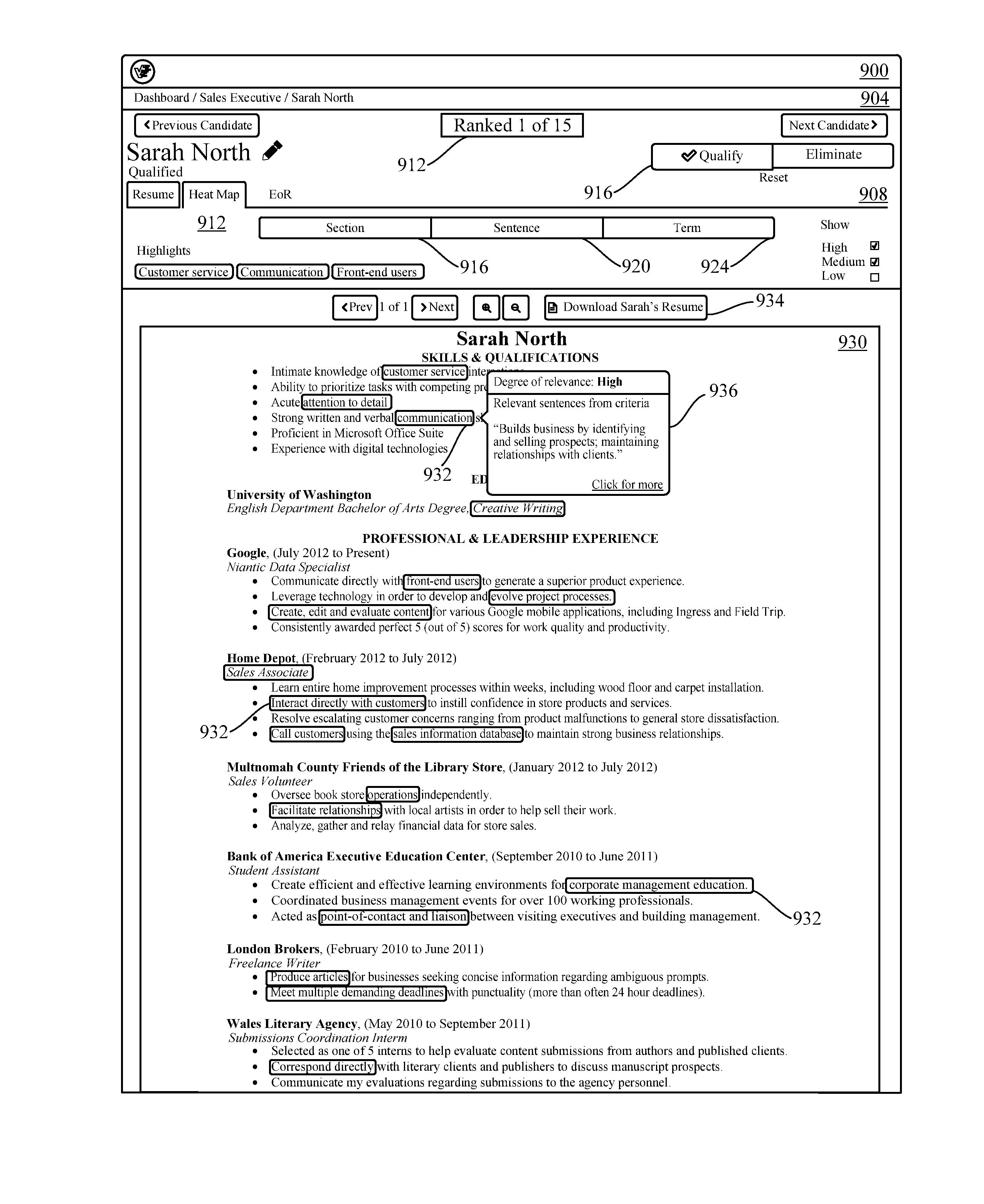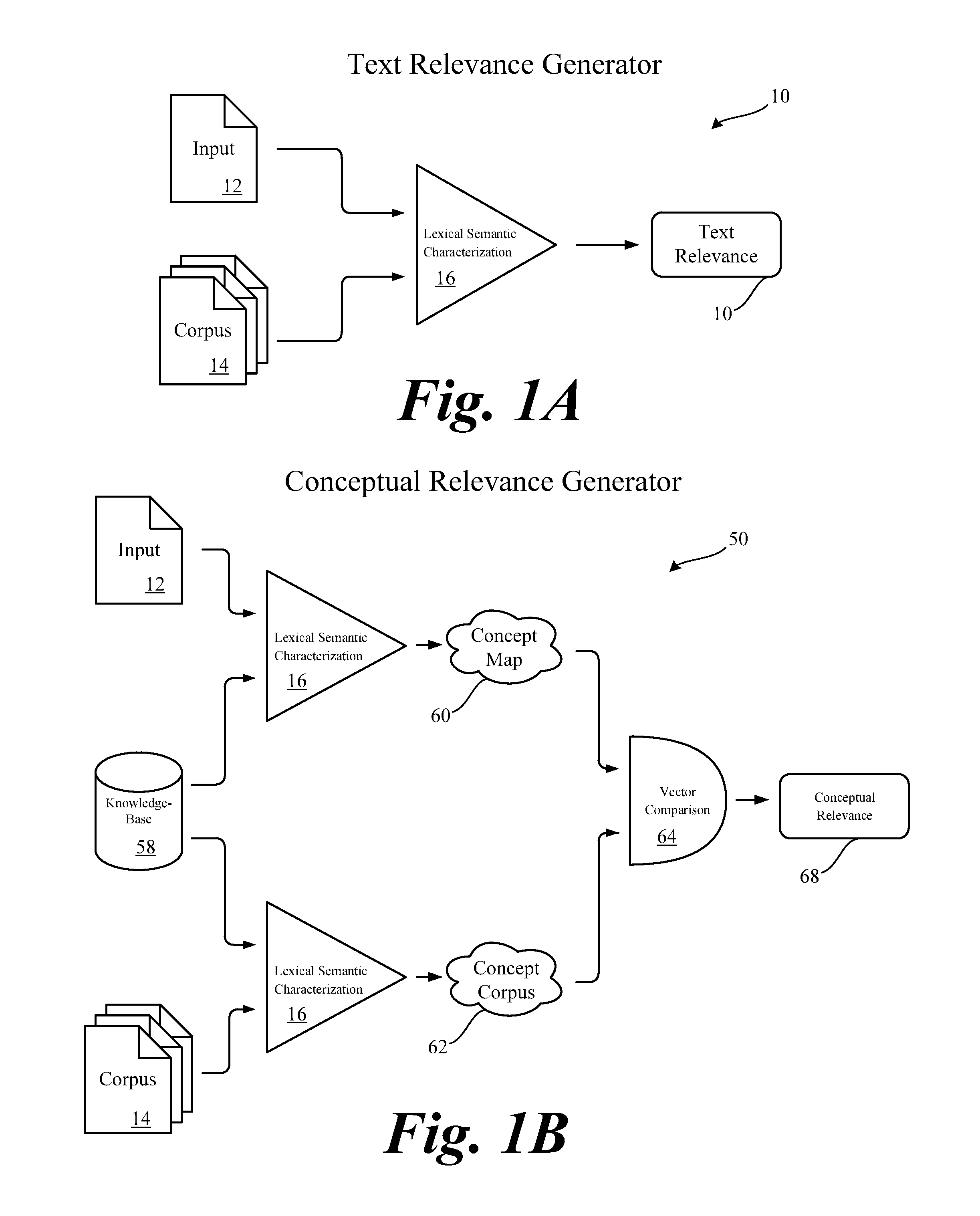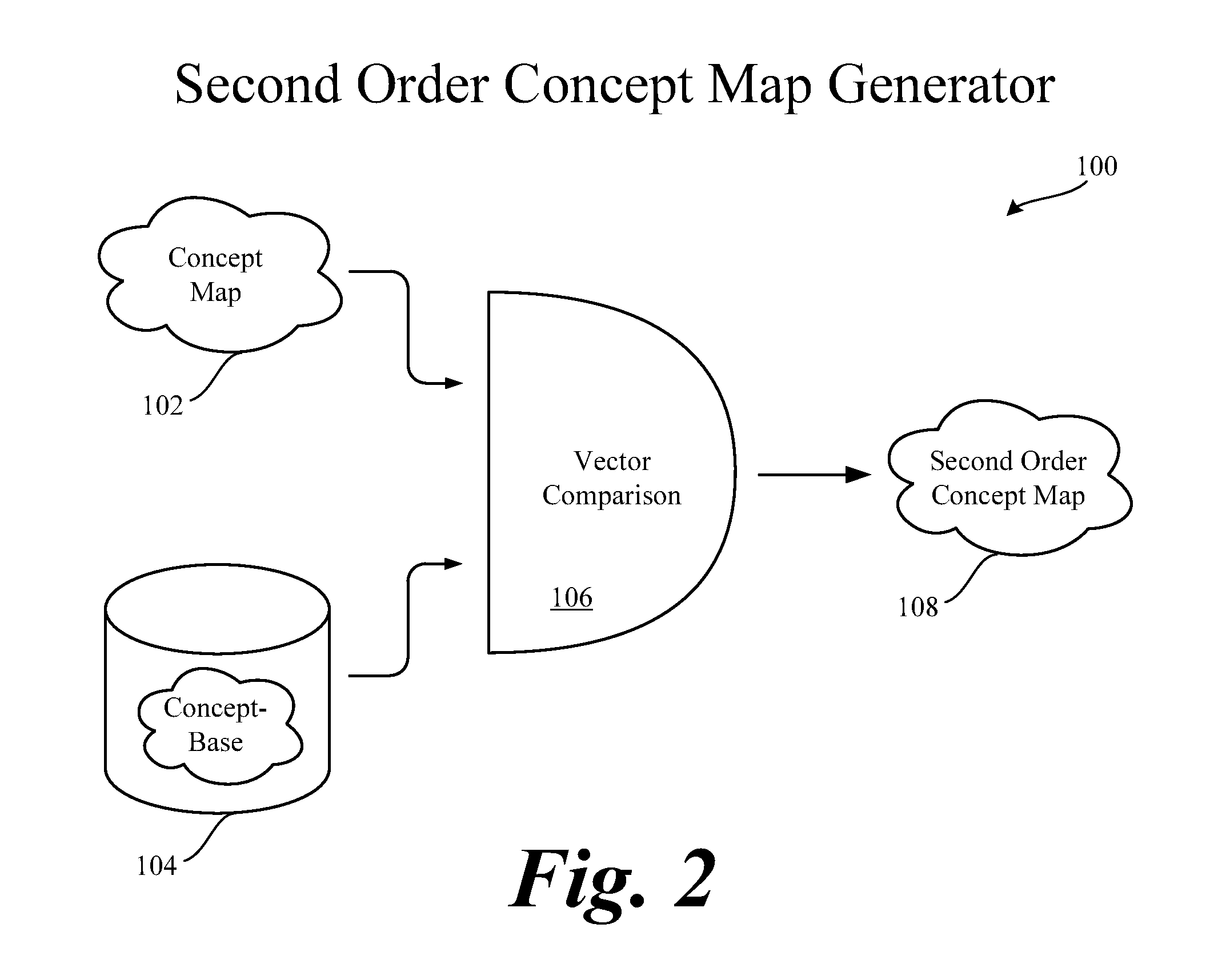Systems and methods to determine and utilize conceptual relatedness between natural language sources
a natural language and conceptual relationship technology, applied in the field of semantic analysis of natural languages, can solve the problems of too many candidates, too large pool, and ineffective evaluation time cost more than the time saved, so as to achieve the effect of reducing labor costs, enhancing efficiency and productivity, and effectively eliminating human inadequacies and/or biases
- Summary
- Abstract
- Description
- Claims
- Application Information
AI Technical Summary
Benefits of technology
Problems solved by technology
Method used
Image
Examples
Embodiment Construction
[0038]Preferred and particular embodiments of the invention involves the application of semantic characterization and retrieval techniques to relate the text of a document to an ontologized lexicographic knowledge base in order to produce a conceptual representation of the document which can be used to determine its meaning within the context of an arbitrary corpus.
[0039]Preferred and particular embodiments of the invention and described with references to the figures described below:
[0040]FIG. 1A depicts a Text Relevance Generator 10 configured as a method to obtain a metric of a primary order signifying the text relevance between two information sources. The Generator 10 provides for entry of at least a portion of a first information source as Input 12 that is compared for text comparison with a second information source as Corpus 14, both the Inputs 12 and the Corpus 14 being processed within a Lexical Semantic Characterization 16. The Lexical Semantic Characterization process 16...
PUM
 Login to View More
Login to View More Abstract
Description
Claims
Application Information
 Login to View More
Login to View More - R&D
- Intellectual Property
- Life Sciences
- Materials
- Tech Scout
- Unparalleled Data Quality
- Higher Quality Content
- 60% Fewer Hallucinations
Browse by: Latest US Patents, China's latest patents, Technical Efficacy Thesaurus, Application Domain, Technology Topic, Popular Technical Reports.
© 2025 PatSnap. All rights reserved.Legal|Privacy policy|Modern Slavery Act Transparency Statement|Sitemap|About US| Contact US: help@patsnap.com



